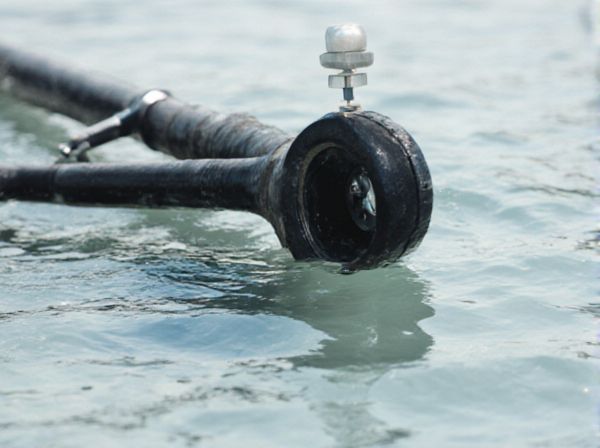
Photo illustration: Semi-floating vs Full-floating
Semi-floating suspension allows the axle shaft to bear both the vehicle's weight and the torque, making it simpler and less expensive but less durable under heavy loads. Full-floating suspension separates these forces by supporting weight on the axle housing and transmitting torque through the axle shaft, providing greater strength and reliability for heavy-duty applications. Choosing the right system depends on your vehicle's load requirements and intended use.
Table of Comparison
| Feature | Semi-Floating Axle | Full-Floating Axle |
|---|---|---|
| Design | Axle shaft supports vehicle weight and torque | Axle shaft transmits torque only; housing supports weight |
| Load Capacity | Lower load capacity; suitable for lighter vehicles | Higher load capacity; ideal for heavy-duty trucks |
| Durability | Less durable under heavy loads | More durable and reliable in rough conditions |
| Maintenance | Complex; axle removal needed for bearing service | Easier; axle shaft can be removed without taking off wheels |
| Cost | More economical | Higher manufacturing and replacement cost |
| Use Case | Passenger cars, light trucks | Heavy trucks, off-road vehicles, commercial trucks |
Introduction to Axle Types
Semi-floating axles support the vehicle's weight partially on the axle shaft and partially on the hub, making them common in lighter vehicles due to their simpler design and lower cost. Full-floating axles carry the entire vehicle load on the axle housing, allowing the axle shaft to only transmit torque, which increases durability and is preferred in heavy-duty trucks and off-road applications. Understanding the distinction between these axle types helps in selecting appropriate systems based on load requirements and vehicle performance demands.
What is a Semi-Floating Axle?
A semi-floating axle supports the vehicle's weight on the axle housing, with the axle shaft primarily transmitting torque to the wheels, resulting in combined load-bearing and torque transfer responsibilities. This axle type offers a simpler design compared to a full-floating axle, making it common in light trucks and passenger vehicles due to lower manufacturing costs and reduced weight. Semi-floating axles typically feature the wheel mounted directly on the shaft, meaning any bearing failure can affect vehicle safety and axle integrity.
What is a Full-Floating Axle?
A full-floating axle is a type of axle design where the axle shaft only transmits torque and does not bear vehicle weight; this setup uses bearings located on the axle housing or hub assembly to support the load. Semi-floating axles combine the functions of torque transmission and load support in a single shaft, increasing the risk of failure under heavy loads. Full-floating axles are preferred in heavy-duty trucks and off-road vehicles due to their durability, ease of maintenance, and enhanced load-bearing capacity.
Key Differences Between Semi-Floating and Full-Floating Axles
Semi-floating axles support both the vehicle's weight and torque transmission through a single axle shaft, while full-floating axles separate these functions, allowing the axle shaft to only transmit torque. Full-floating axles provide greater durability and load capacity by supporting the vehicle's weight with the axle housing and bearings, making them ideal for heavy-duty applications. Semi-floating axles are more common in light-duty vehicles due to their simpler design and cost-effectiveness but offer less reliability under heavy loads compared to full-floating axles.
Advantages of Semi-Floating Axles
Semi-floating axles offer enhanced durability and load-bearing capacity by supporting the vehicle's weight directly on the axle shaft and housing. This design simplifies maintenance and reduces manufacturing costs compared to full-floating axles while maintaining sufficient strength for light to medium-duty applications. The semi-floating configuration also provides a more compact and lighter axle assembly, improving fuel efficiency and vehicle handling.
Advantages of Full-Floating Axles
Full-floating axles provide superior load-bearing capacity by supporting the vehicle's weight entirely on the axle housing rather than the shaft, reducing stress and enhancing durability. This design allows easier maintenance and axle shaft replacement without removing the entire wheel assembly, minimizing downtime. The full-floating setup also improves vehicle safety by preventing axle shaft failure from compromising wheel attachment during heavy loads or rough terrain.
Applications and Use Cases
Semi-floating bearings are commonly used in automotive crankshafts where cost-effective load distribution and alignment control are crucial, particularly in small to medium engines. Full-floating bearings find their applications in high-performance or heavy-duty engines, such as in racing or industrial machinery, where superior load capacity and precise alignment under extreme conditions are required. The choice between semi-floating and full-floating designs depends largely on engine speed, load demands, and maintenance considerations.
Maintenance and Durability Comparison
Semi-floating axles feature a simpler design where the axle shaft bears both the vehicle's weight and torque, often resulting in higher wear and more frequent maintenance requirements. Full-floating axles separate load-bearing from torque transfer, significantly enhancing durability and reducing maintenance frequency due to less stress on the axle shaft. This design distinction makes full-floating axles preferable for heavy-duty applications, offering greater longevity and reliability under demanding conditions.
Cost and Efficiency Considerations
Semi-floating bridges typically offer lower construction and maintenance costs compared to full-floating bridges due to simpler structural requirements and reduced material use. Full-floating bridges provide enhanced efficiency in load distribution and adaptability to varying water depths, leading to longer lifespans and better performance in dynamic marine environments. Cost-efficiency analysis must balance upfront expenditures with long-term durability and operational demands unique to each floating bridge type.
Choosing the Right Axle for Your Vehicle
Selecting the right axle for your vehicle depends on its intended use and load requirements; semi-floating axles offer a simpler design suited for lighter vehicles and moderate loads, providing easier maintenance and lower cost. Full-floating axles are designed for heavy-duty applications, bearing the vehicle's weight on the axle housing rather than the axle shaft, which increases durability and safety under high stress. Evaluating factors like load capacity, towing needs, and off-road performance helps determine whether the semi-floating or full-floating axle best matches your vehicle's demands.
 caratoz.com
caratoz.com